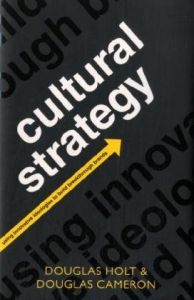Acesse a sua conta getAbstract para obter o resumo!

Acesse a sua conta getAbstract para obter o resumo!
Douglas Holt and Douglas Cameron
Cultural Strategy
Using Innovative Ideologies to Build Breakthrough Brands
Oxford UP, 2010
Sobre o que é?
You don’t need a better mousetrap – you need a better ideology that resonates with consumers.
Recommendation
Most branding experts belong to the “better mousetrap” school – an innovation-driven model that says success follows technological advances that improve product function. Most brands fight to win consumer mindshare around an established set of benefits. This approach doesn’t explain how “me-too” brands come to dominate markets. Starbucks, Marlboro, Ben & Jerry’s and Vitaminwater are blockbuster brands that offered nothing new, but their fresh marketing resonated with consumer ideology. This is the backbone of the “Cultural Strategy” model from brand experts Douglas Holt and Douglas Cameron, though those with a cursory interest might find it the dense, information-packed text hard to read cover to cover. getAbstract recommends their thorough, fascinating case studies and idea-based tactics to those who’ve grown tired of the functional-innovation viewpoint and would like to try using cultural intelligence instead.
Summary
About the Authors
University of Oxford professor Douglas Holt wrote the bestseller How Brands Become Icons. He and branding specialist Douglas Cameron are co-principals of the Cultural Strategy Group.





















Comment on this summary